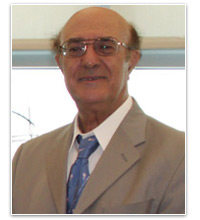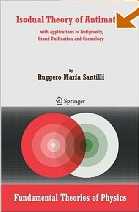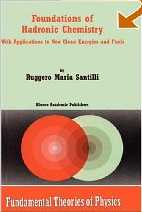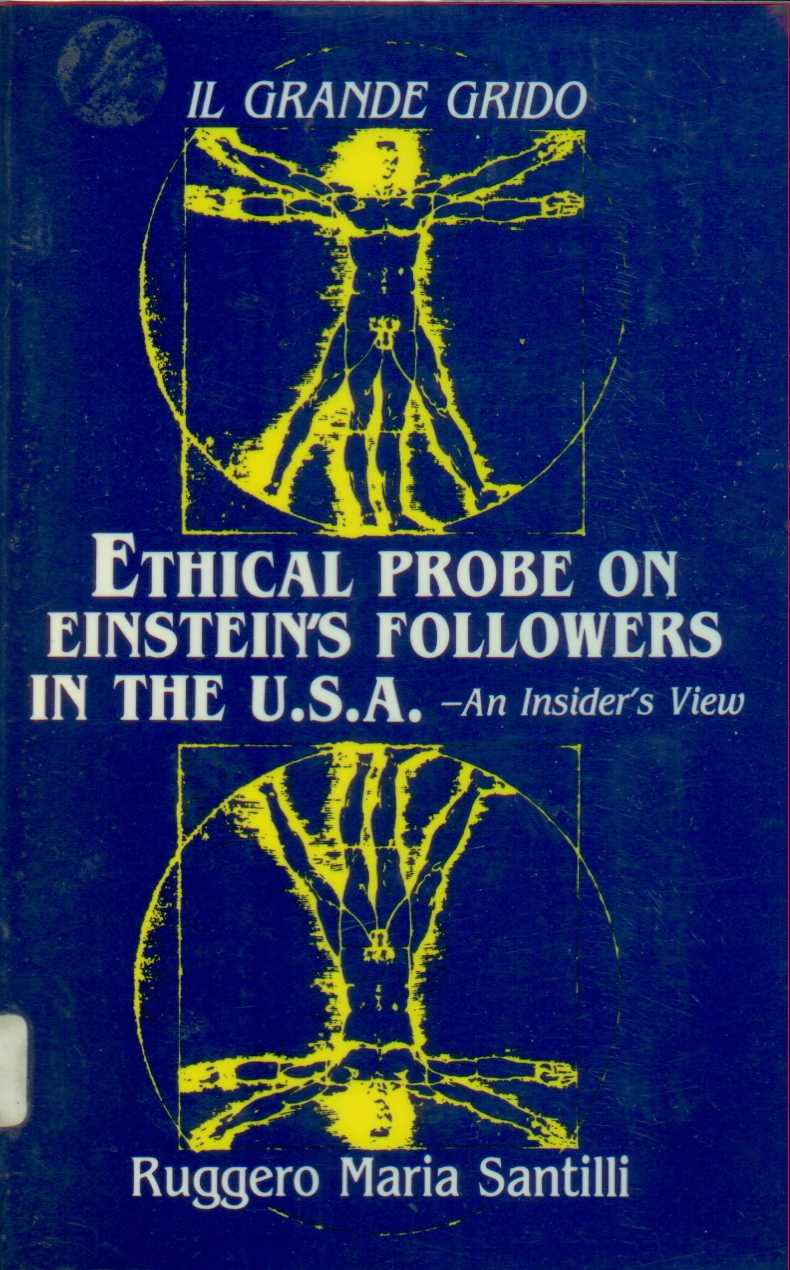View count: 1
Pages: 200
Publisher: International Academic Press
Year: 2008
Websites: www.i-b-r.org/Hadronic-Mechanics.htm
Pages: 329
Publisher: Springer
Year: 2006
ISBN: 1402045174
ISBN: 978-1402045172
Websites: www.i-b-r.org www.scientificethics.org
Antimatter, already conjectured by A. Schuster in 1898, was actually predicted by P.A.M. Dirac in the late 19-twenties in the negative-energy solutions of the Dirac equation. Its existence was subsequently confirmed via the Wilson chamber and became an established part of theoretical physics.
Dirac soon discovered that particles with negative energy do not behave in a physically conventional manner, and he therefore developed his "hole theory". This restricted the study of antimatter to the sole level of second quantization.
As a result antimatter created a scientific imbalance, because matter was treated at all levels of study, while antimatter was treated only at the level of second quantization.
In search of a new mathematics for the resolution of this imbalance the author conceived what we know today as Santilli?s isodual mathematics, which permitted the construction of isodual classical mechanics, isodual quantization and isodual quantum mechanics.
The scope of this monograph is to show that our classical, quantum and cosmological knowledge of antimatter is at its beginning with much yet to be discovered, and that a commitment to antimatter by experimentalists will be invaluable to antimatter science.
Pages: 452
Publisher: Springer
Year: 2001
ISBN: 1402000871
ISBN: 978-1402000874
Websites: www.i-b-r.org www.scientificethics.org
Despite outstanding achievements, Quantum Chemistry has failed to achieve exact representations of molecular data from exact quantum principles. Hadronic Chemistry is a new, nonlinear, nonlocal and nonunitary covering discipline which admits all quantum models as particular cases, while permitting invariant representations of molecular data exact to any desired accuracy. These results are due to a new mathematics necessary for the invariant treatment of nonlinear, nonlocal, and nonunitary theories, known as Santilli isomathematics, and a new structure model of molecules with strongly attractive correlations of valence electron pairs in single couplings, which correlations are nonlinear, nonlocal, and nonunitary, thus outside all the capabilities of Quantum Chemistry. Following a systematic presentation of the basic methods, the new model of molecules, and its experimental verifications, the author applies Hadronic Chemistry to the prediction and experimental verification of a new chemical species, called magnecules, consisting of stable clusters of molecules, dimers, and individual atoms under new non-valence internal bonds. Finally, the author applies all these results to the industrial development of new, clean energies and fuels.
Review
`In this pioneering monograph, the Italian-American physicist Ruggero Maria Santilli has submitted a structural generalization-covering of quantum mechanics and chemistry under the name of 'hadronic mechanics and chemistry' which appears to resolve the above problematic aspects. In fact, the new mechanics achieves essentially exact representations ofmolecular characteristics; consequently permits exact thermochemical calculations; introduces a new, strongly attractive force between valence pairs in singlet coupling with the strength needed to represent reality; restricts valence bonds solely to electron pairs in singlet couplings; eliminates the prediction of an arbitrary number of atomic constituents in molecular structures; and correctly represents the diamagnetic or paramagnetic character of the various molecules. Finally, and quite remarkably after all the preceding achievements, Santilli presents the application of the new methods and the chemical species of magnecules to the industrial production of a new fuel he calls MagneGas? (see www.magnegas.com), whose combustion exhaust is so clean that the new fuel has been certified not to require catalytic converters. In a nutshell, the monograph lends credence the view expressed repeatedly by Santilli in earlier work, that "there cannot be really new scientific theories without really new mathematics, and there cannot be really new mathematics without new numbers".'
Professor Jeremy Dunning Davies, University of Hull, UK
`That Professor Santilli, repeatedly nominated for the Nobel Prize, is extremely well equipped and capable to both ends is amply documented, first and foremost by his work, but also by the biographic and bibliographic sections of the monograph which deserve to be briefly summarised as well. He proposed Hadronic Mechanics already in 1978 jointly with its basic Lie-admissible structure when he was at Harvard University under US Department of Energy support. Its study was continued by mathematicians, theoreticians and experimentalists too numerous to quote here (but included in the book's references). However, Santilli remains to this day the most active contributor, eventually bringing the venture to full mathematical maturity in 1996, physical maturity in 1997 and geometric maturity in 1998.'
Professor Erik Trell, Link?ping University, Sweden
Publisher: Hadronic Press
Year: 1997
ISBN: 0911767940
ISBN: 978-0911767940
Websites: www.i-b-r.org www.scientificethics.org
Pages: 239
Year: 1997
ISBN: 11574850202
Websites: www.i-b-r.org www.scientificethics.org
Pages: 193
Publisher: Hadronic Press
Year: 1995
ISBN: 0911767916
ISBN: 978-0911767919
This is the first mathematical study of sea shells with a potentially seminal character. In fact, the authors show for the first time via computer simulation that sea shells do not appear to grow normally in our Euclidean or Minkowskian space-time, but require a structurally more general geometry. This second edition preserves the original contributions and includes the first treatments on record of sea shells via the isoeuclidean geometry and the identification of their universal isorotational symmetry. The volume includes several beautiful color plates of computer visualization of complex sea shells. The first edition of this monograph was very well received by professional conchologists, theoretical physicists and mathematicians. This second edition should be part of all science libraries.
Breaking completely with the earlier generation of biologically-oriented scholars who first used computers to generate images resembling shell, ten papers by researchers from throughout the world report on the latest computer and mathematical modeling and investigation of how and why mollusks make shells the way they do. Among the topics are using frenet coordinates in advanced shell modelling, strange coiling-transitions in the cerion land-snails, and imaging tiny shells with the scanning electron microscope. Reproduced from typescripts. No index. Annotation c. by Book News, Inc., Portland, Or.
SciTech Book News (04/01/1996)
Publisher: Naukova Dumka
Year: 1994
ISBN: 091176769X
ISBN: 978-0911767698
Websites: www.i-b-r.org www.scientificethics.org
Publisher: Hadronic Press
Year: 1993
ISBN: 0911767878
ISBN: 978-0911767872
Websites: www.i-b-r.org www.scientificethics.org
Publisher: Hadronic Press
Year: 1992
ISBN: 091176755X
ISBN: 978-0911767551
Pages: 406
Publisher: Alpha Publishing
Year: 1984 / Revised 2007
ISBN: 978-0931753008
ISBN: 0931753007
Websites: www.i-b-r.org www.scientificethics.org
Download and read it now
At the time of this decision, I was unaware of the fact that scientific ethics in the U. S. physics community had declined since Fermi's time. Following my arrival here, I have observed and experienced a further deterioration of scientific ethics. A series of more recent episodes has created my conviction that it is time for the U. S. society to confront and contain the problem of scientific ethics in physics. In fact, the lack of vigilance on ethical issues may well constitute a threat to 'our free societies.
In this book, I present my case to the best of my recollection and documentation. In Chapter 1, I present the background scientific issues in a way as understandable to the general audience as possible. In Chapter 2, I review my personal experiences with primary U. S. Universities, Federal Laboratories, Journals of the American Physical Society, and Governmental Agencies. Finally, in Chapter 3, I pass to the constructive part, the submission of a number of recommendations aimed at containing ethical problems in physics.
Pages: 370
Publisher: Springer
Year: 1983
ISBN: 0387094822
ISBN: 978-0387094823
Publisher: Springer
Year: 1978/1984
ISBN: 3540088741
ISBN: 978-3540088745
ISBN: 0387088741
ISBN: 978-0387088747





